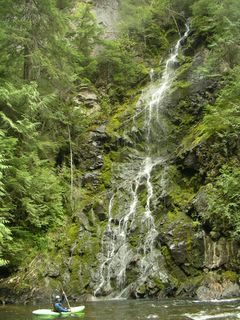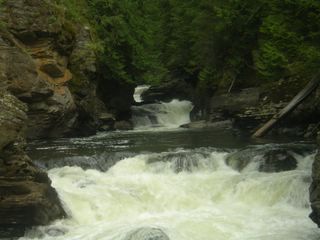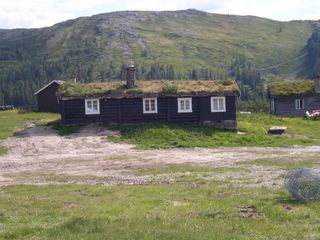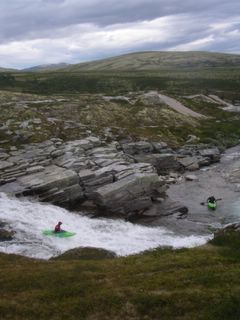
Scott Feindel setting up for the canyon entrance on the Astoria River - Jasper National Park, Alberta.

As we hang up the paddles and pull out the snowmobiles and skis here in the Great White North, one can't help but smugly reflect on a most interesting paddling season that was greatly enjoyed by many Western Canadian river rats such as myself. Expecting a lousy runoff due to mediocre snow pack, this was greatly altered thanks to a month of huge rains last June. The window of river running opportunity multiplied tenfold over the course of a few weeks and even to this very day, dams are still running at 100%. The water tables across the province of Alberta have never looked better.
One of the rivers that enjoyed an extended season is a Rocky Mountain classic located just outside the mountian town of Jasper. The Astoria has long been considered a special river among creekers past and present. Although it is not the sickest run in the West, a combination of easy access, pristine Jasper National Park wilderness and continuous gradient put the Astoria high up on summer tour schedules. Paddlers who know the Astoria routine and are confident running the final class V canyon can pull off a morning blast and be back on a Jasper patio sipping brews by lunchtime. From here, it is an easy drive west one hour to the classic big volume water found in the upper Fraser.

A satellite image of the Astoria River courtesy of Google Earth.

The Astoria would probably be a multi-day mission if it weren't for the paved road giving summer tourist access to Mount Edith Cavell and the hanging Angel Glacier. About 1km before the main parking lot at the end of the road look for the Tonquin Valley trailhead and park your vehicle here.

Gearing up at the Astoria put-in with Mt. Edith Cavell in the background.

Follow a short stretch of the trail to the bridge that crosses Cavell Creek. You will only hear Cavell Creek as most of it now runs underneath a bed of large rocks which you will find useful to walk on. Head down the boulder bed and once the rocks lose their size and the creek reappears, move to the right shore and make your way through the brush until you encounter the calm meandering Astoria at the bottom of the valley.

Joey Vosburgh and Colan Morrow on their way down the boulders atop Cavell Creek

The Astoria will begin to take off in a continuous bed of boulders less than half a kilometer from the put-in. Depending on the flow, either there will be some bumpy sections or you will be wanting to space yourselves out as you begin to speed down a ribbon of white. Don't be too surprised if you can't find an eddy able to hold more than one kayak. If the water is high you will find yourself in an endless but manageable torrent of whitewater bliss making lots of quick technical moves and hopefully keeping your kayak pointing downstream. After about 5km, the river becomes even steeper and it is time to begin looking for a steep left sweeping turn that ends in a sharp right corner at the canyon entrance drop known as the Howler. You can get out on the left well above this section and walk down to the entrance of the canyon to scout. If the canyon entrance drop looks really nasty, this short but intense canyon will contain several very difficult lines including a river wide hole located just downstream of the entrance.

Scott Feindel keeps his speed through an unpredictable hole downstream of the canyon entrance.

A bail out option is to head up the river left slope and portage the entire canyon. This option is not as bad as it looks and can be done in less than an hour. The canyon ends in a beautiful pool backed up by a small diversion dam perched on the edge of an unrunnable walled waterfall. Carry your boat down the dirt road and you will come to the main road and bridge that crosses over the Astoria. If you haven't had enough you can put back in and run 3.5km more of the Astoria as it flattens out into grade II before joining with the Athabasca River Valley.

Looking downstream from the take-out at the crazy rapids below the diversion dam. Photos courtesy of Jordie Mckenzie.

View Untitled in a larger map





















